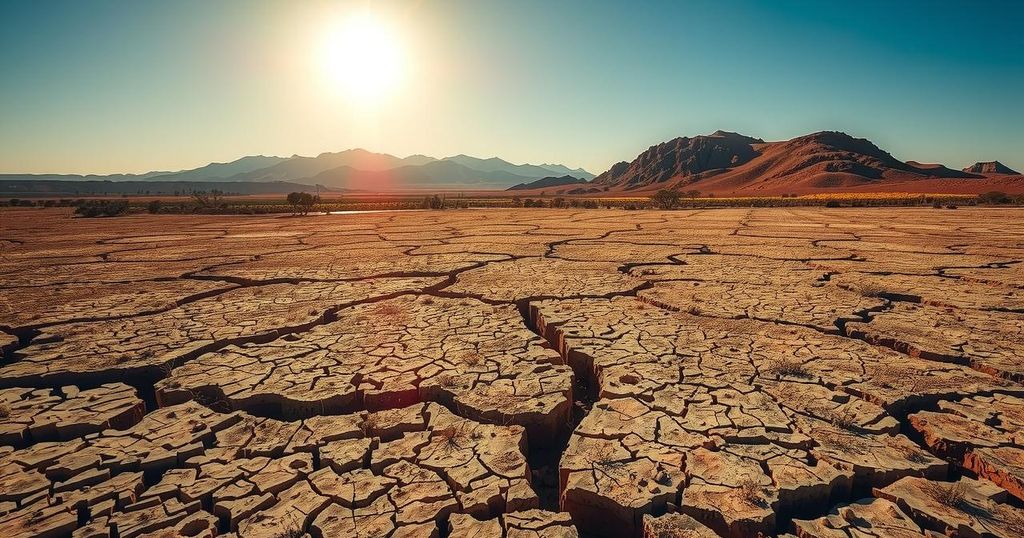Youth Leading the Charge: Green Mountains Students Transform Lessons into Action
In the Green Mountains of Vermont, 60 students participated in a summer program focused on climate action, merging their talents to address local environmental issues. After developing their projects, Anna, Vaishnavi, and Katana shared their experiences, highlighting their challenges and strategies. Their stories reveal the significance of collaboration, adaptation, and youth leadership in driving positive climate action in their communities.
Last summer, in the picturesque Green Mountains of Vermont, a group of 60 students collaborated to study climate change and devise actionable solutions. They merged their interests and capabilities with their potential impact as youth, identifying environmental challenges in their communities. Following the development of their projects and feedback from experts, these students returned home to implement their ideas.
Three participants, Anna P., Vaishnavi S., and Katana K., shared insights into the evolution of their Climate Action Projects after graduating from the Columbia Climate School’s summer program in 2024. The program, designed for high school students, focused on enlightening them about climate issues while guiding them to create projects that could be executed in their local areas. Through lectures and hands-on activities, they collaborated with peers and Columbia faculty.
Anna, a sophomore from Virginia, became intrigued by the Inflation Reduction Act and the myriad of incentives it provides. Recognizing the complexity surrounding these benefits, she envisioned a website that would facilitate access, featuring an incentive calculator and resources. This project aims to empower users to take advantage of the IRA.
Vaishnavi, a senior from Washington State, had initiated work with local energy officials before attending the program. With a commitment to solar energy installations, she faced implementation challenges despite her initial enthusiasm. Expert guidance encouraged her to refine her project, which focuses on installing solar panels in K-12 schools in her community.
Katana, another sophomore, applied lessons from the Green Mountains program to her school’s Climate Action Club. Initially aiming to replace plastic utensils with reusable options, she encountered significant obstacles. She shifted her focus to enhancing cafeteria sustainability by researching biodegradable alternatives and expanding the school’s composting practices, which presently fell short of necessary standards.
Both Vaishnavi and Katana noted the difficulties of aligning their goals with the often slow-moving processes of institutions. Vaishnavi emphasized the importance of patience, saying, “Until I am in a position of power or influence where I can make decisions lickety-split, I’ve learned to…take on the pacing of government institutions.” Katana highlighted the need for persistence within established systems, advocating for a balance between determination and diplomacy.
Despite the hurdles, these students made meaningful progress through collaboration. Vaishnavi advised finding like-minded individuals for support and articulating clear goals for their projects. Her vision of becoming an environmental engineer specializing in renewable energy drives her motivations. Katana intends to take on a leadership role in her Climate Action Club to advocate for institutional change.
Anna is set to launch her website, “Save Money, Reduce Emissions,” in the spring, focusing on educating users about the IRA’s benefits. She values her current status as a high school student, leveraging her time to learn and engage with the community about her project. Anna expressed her enthusiasm by stating, “There is so much more I want to learn and have to learn.”
Laurel Zaima-Sheehy, assistant director at the Climate School, remarked on the significant role of youth within the climate movement, saying, “Young people have incredible power in the climate movement and are stepping up as community leaders…The goal is for the climate work to continue long after the program is over.” The students’ initiatives showcase the potential for impactful climate actions led by a new generation.
The Columbia Climate School program in the Green Mountains has empowered students like Anna, Vaishnavi, and Katana to confront climate challenges head-on through collaborative and practical projects. By utilizing their insights and adapting to real-world challenges, these youth exemplify leadership and determination. As they implement their initiatives, they embody the potential for meaningful change in their communities, inspiring others to engage in climate action.
Original Source: news.climate.columbia.edu




Post Comment